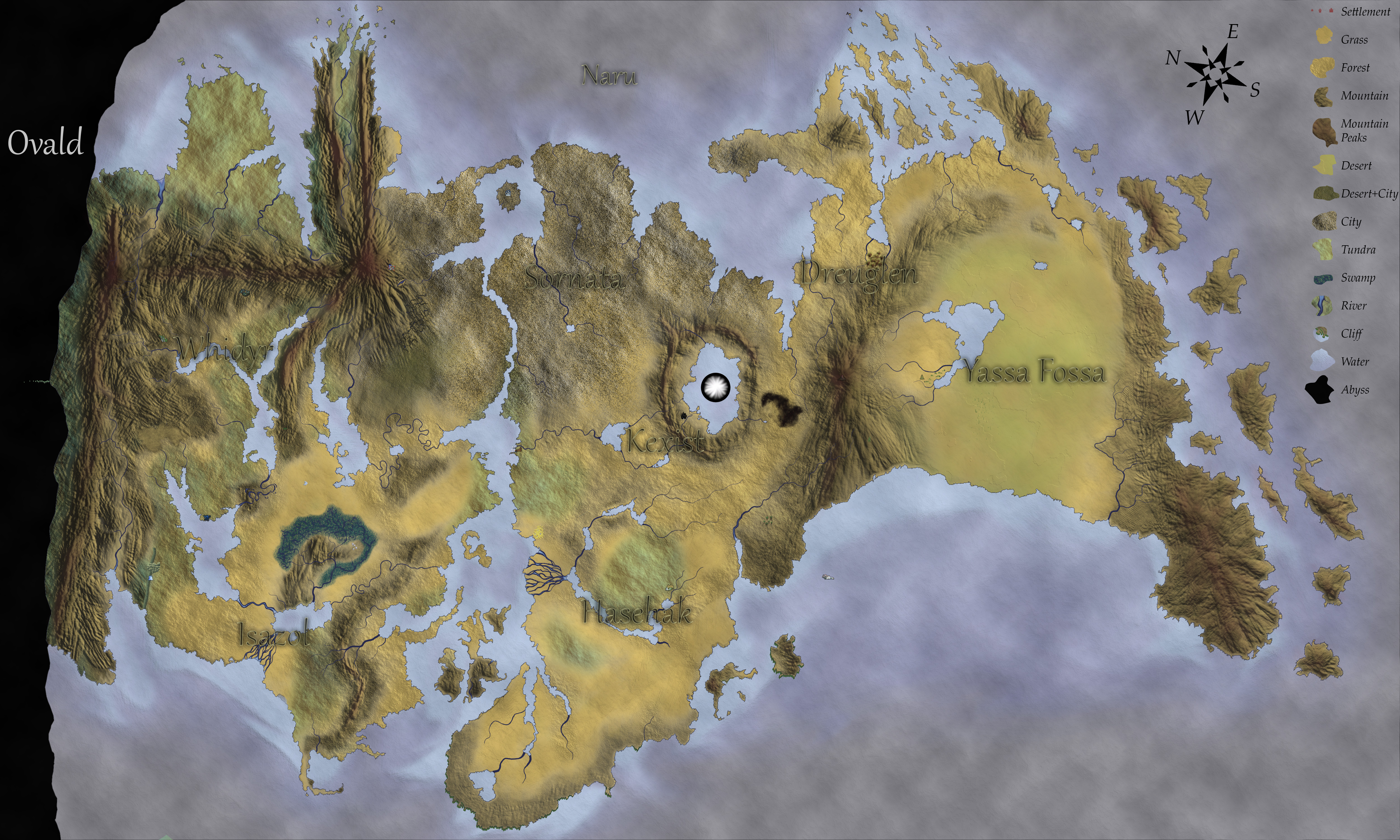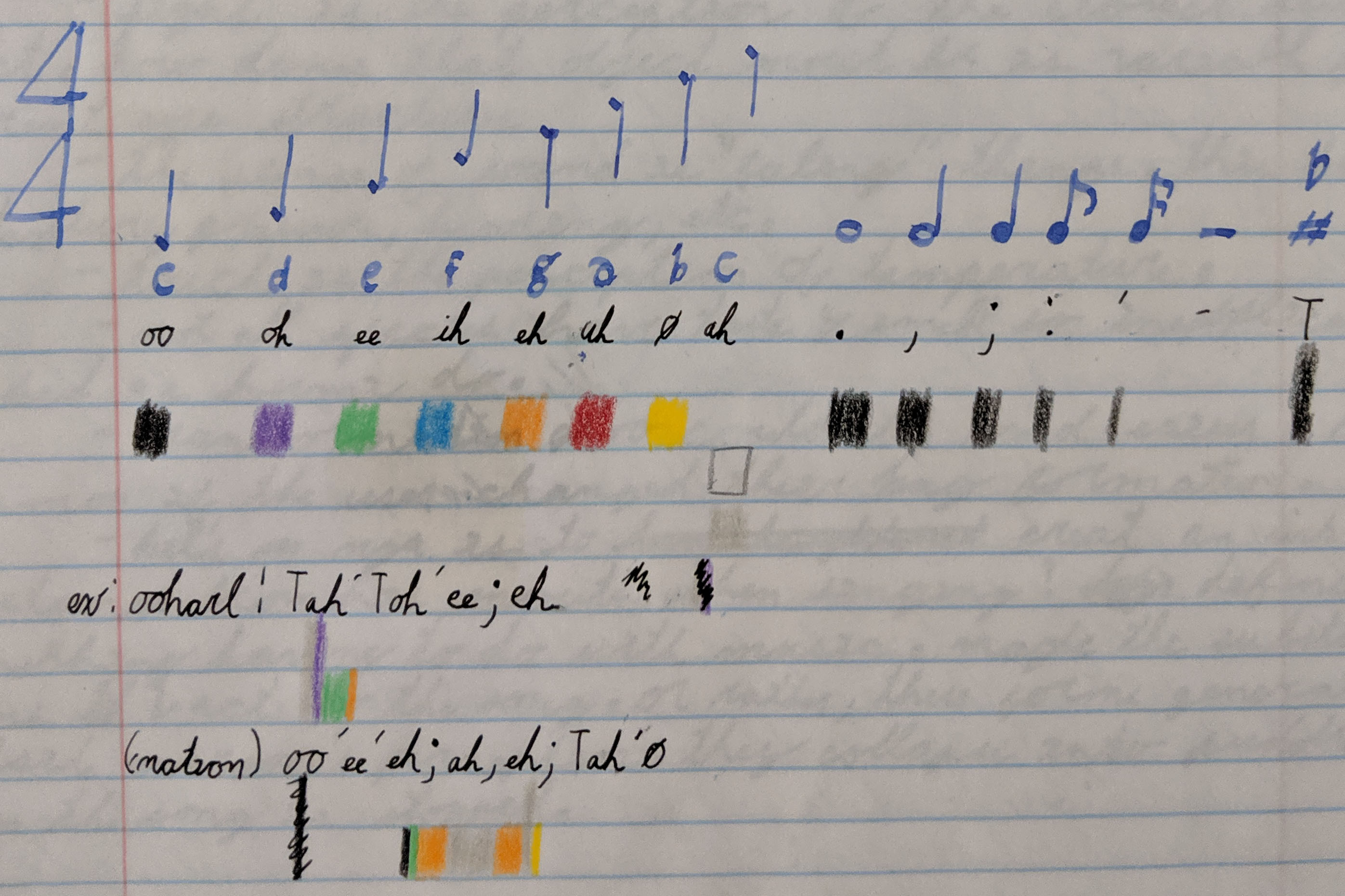a;O;u;
Origin & Writing
Originally the language was used with placed objects, but one the tsohtsi discovered ink, they began to use that along with their great murals. Speaking of their great murals, archaeologist have discovered that much of the, once thought, abstract artwork they had created were in fact epics of gods, heroes, and other tales.Thoos has aspects taken from a;O;u;. The Painted Writing system was not taken, however.
Musical language
The language consist of different notes to create meaning. The base uses a scale of eight notes that changes from region to region, some having scales similar to an Egyptian scale or blues scale. While rural areas have subsets of a;O;u; (some even having it as a different language entirely with differing amounts of notes/letters and scales), the predominant scale of the eight his very well known.As the language grew from tsohtsi, it is easy for them to pronounce. But for other creatures who cannot so easily make their sounds, they must make do. Many Humi have resorted to whistling, trying to, as close as they can, mimic the tsohtsi. Other creatures “sing” and yet more hum the notes while beginning sharp notes they cannot make with T, D, Ts, Ds, or another stop sound.
A word is strung together notes (beamed or one whole or one/two half notes). Each person has their own meter and time signature with which the talk to each other. The meter also acts as the punctuation, a faster beat being an exclamation and a punctuation of the ending note forming a question.
Harmony & Chords
Words from high a;O;u; and other old tsohtsi language have words that use chors. But over time, those chords have been simplified to single notes. This also developed by other species trying to pronounce their words. They were unable to pronounce the chords, and changed the sounds to a single note to compensate.In older tsohtsi language, music was one in the same with words. A song would speak with emotion and meaning in one. But now songs, that use chords, are separate from meaning, being emotion as most other cultures have it.
Alphabet & Denotations
Ah;oo;ul;
| Note | Sung | Written | Color |
|---|---|---|---|
| C | Do | O | Black |
| D | Re | o | Purple |
| E | Mi | I | Green |
| F | Fa | i | Blue |
| G | So | e | Orange |
| A | La | U | Red |
| B | Ti | u | Yellow |
| C | Do | a | White |
Dictionary
Grammar
Nominative Sharp/T
Accustivie Long pause
All other Regular
The last note does not need a length
Seperate “words” by at least a quarter length
Suffixes
Whole .
Half ,
Quarter ;
Eighth :
Sixteenth '
hum/warble/pause -
Prefix
Sharp/T T
Whole .
Half ,
Quarter ;
Eighth :
Sixteenth '
hum/warble/pause -
Prefix
Sharp/T T
Successor Languages





Comments